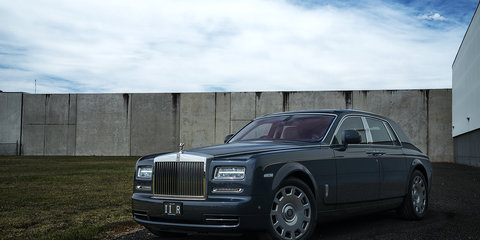rolls royce 2017(Find out for yourself)
If ever a brand name stood for superlative quality, it would have to be Rolls-Royce. We’ve all heard it used in describing the best of the best, so much so that the name is has become a part of our everyday vernacular: the “Rolls-Royce of furniture” or the “Rolls-Royce of appliances
So when the brand was relaunched in 2004 under BMW’s ownership, the first car that Goodwood-based Rolls-Royce built came with a crushing weight of stratospheric expectations. The Phantom had to have the world’s best ride, coupled with interior quality that competitors could only dream of, plus a road presence that was completely unrivalled. It didn’t disappoint
Nine years later, the Phantom was still a very nice machine, however the world had moved on. Its quality was never in question but it lagged sorely from a technological standpoint. Sure, there were running changes during its near decade-long lifespan but they were purely cosmetic; even Rolls-Royce’s smaller car, the Ghost, left the Phantom languishing in its electronic wake. The big car was in dire need of an update
Thus, in March of 2014, Rolls-Royce announced the Phantom Series III, a thorough makeover of its flagship model, boasting a range of technological and mechanical enhancements to bring the Phantom into the age of the iPad
The casual observer will pick the obvious changes; the full LED upper rectangular headlights replace the lower circular lights and there’s a small indicator strip below, the front bumper curves up into the front end more, while the mirrors are slightly tapered on the outer edge. However, trainspotters will notice the detail changes. The tail_lights have a tiny chrome bar separating the lamps, echoing the headlight design, the side indicator is now housed in the Rolls-Royce badge, the wheels are 22-inchers as standard, while the rear bumper features a stainless steel strip that matches the boot widt
Thankfully, the update hasn’t altered the painstaking build process. There are still around 62 people who spend more than 451 hours on each car. It takes 19 days to finish just the woodwork in a standard car (running two consecutive eight-hour shifts) and longer if the client requests bespoke wood monograms or logos. The wiring loom in each car weighs over 34 kilograms and laid end to end, the wires in a Phantom would stretch for over 1.7 kilometres
Read about our factory tour at Rolls-Royce HQ in the UK here, if you’re interested.
There is approximately 40 square metres of hide in each car, or more than 15 cows, yet dependent on the model and owner’s requirements, sometimes up to 20 animals are used. Each Phantom is sprayed in its base colour and then hand sanded for five hours, before painting clear over it, ensuring a mirror-like finish. And if you want a pinstripe on it, then one man hand paints it on – no vinyl striping around here. It all adds up to ridiculous amounts of detail and care. You can even watch the entire process of your Phantom being built, if you’ve got the time

The Series II update brings a far larger sat-nav screen which, like the previous Phantom, hides behind a wooden panel replete with analogue clock. At 8.7-inches, even octogenarian millionaires can read it, and the resolution is far better than the previous Phantom. Though we would have liked to have seen the rotary controller’s touch-pad top found in the Ghost and Wraith, the BMW iDrive-based software is far simpler to use than previously. You can now also stream your music via Bluetooth to the Harman LOGIC7 system (arguably one of the industry’s best), or simply connect your iPhone via USB and play music. One thing’s for sure, audiophiles will be in their happy place
In keeping with the technological update, five cameras give a surround view of the Phantom, and the front wing cameras can be used when pulling up to an intersection to nose ahead of the truck which may obscure your view
Under the bonnet is still the glorious direct-injection, naturally aspirated, 6.74-litre V12, which puts out 338kW and 728Nm; its silky smoothness and (literally) vibration-free start needed no improvement. But in an effort to improve its efficiency, it’s now backed up by the excellent eight-speed ZF auto (down from 386g/km to 341 g/km), enabling it to lunge to 100km/h in the most serene 5.6 seconds you will ever experience
Flatten your foot from rest and the V12 evidently works somewhere up the front, despite it feeling completely removed from the equation; there’s a faint metallic whirr and the car slowly yet strongly builds speed until you’ve reached triple digits where, if your keep your foot buried, it has deceptively piled on enough momentum to cause alarm; after all, nearly three tonnes of metal hurtling down the road needs to be planned for in advance.
The Phantom’s brakes are more than up to the challenge, though. Pedal feel is very good and although you’re acutely aware of the extra assistance, the pedal progression is very linear
The addition of extra bracing to the aluminium spaceframe now allows for a “dynamic” package, which was fitted to our test car. While the Phantom’s standard ride is nothing short of amazing, the dynamic package lifts the bar even further by increasing the roll resistance. The suspension’s compression stroke gets progressively firmer, so the fabulous ride is still there smothering bumps (though being air suspension, the occasional jolt gets transmitted through), but there’s a comforting solidity to be found when the roads become more twisty. It’s in no way a sports car and there’s a degree of restraint required, but it’s more agile than you’d expect from a car of this magnitude. Helping here is the thicker steering wheel, which is weighted on the light side, but there’s a good amount of true feedback
ROLLS-ROYCE
























